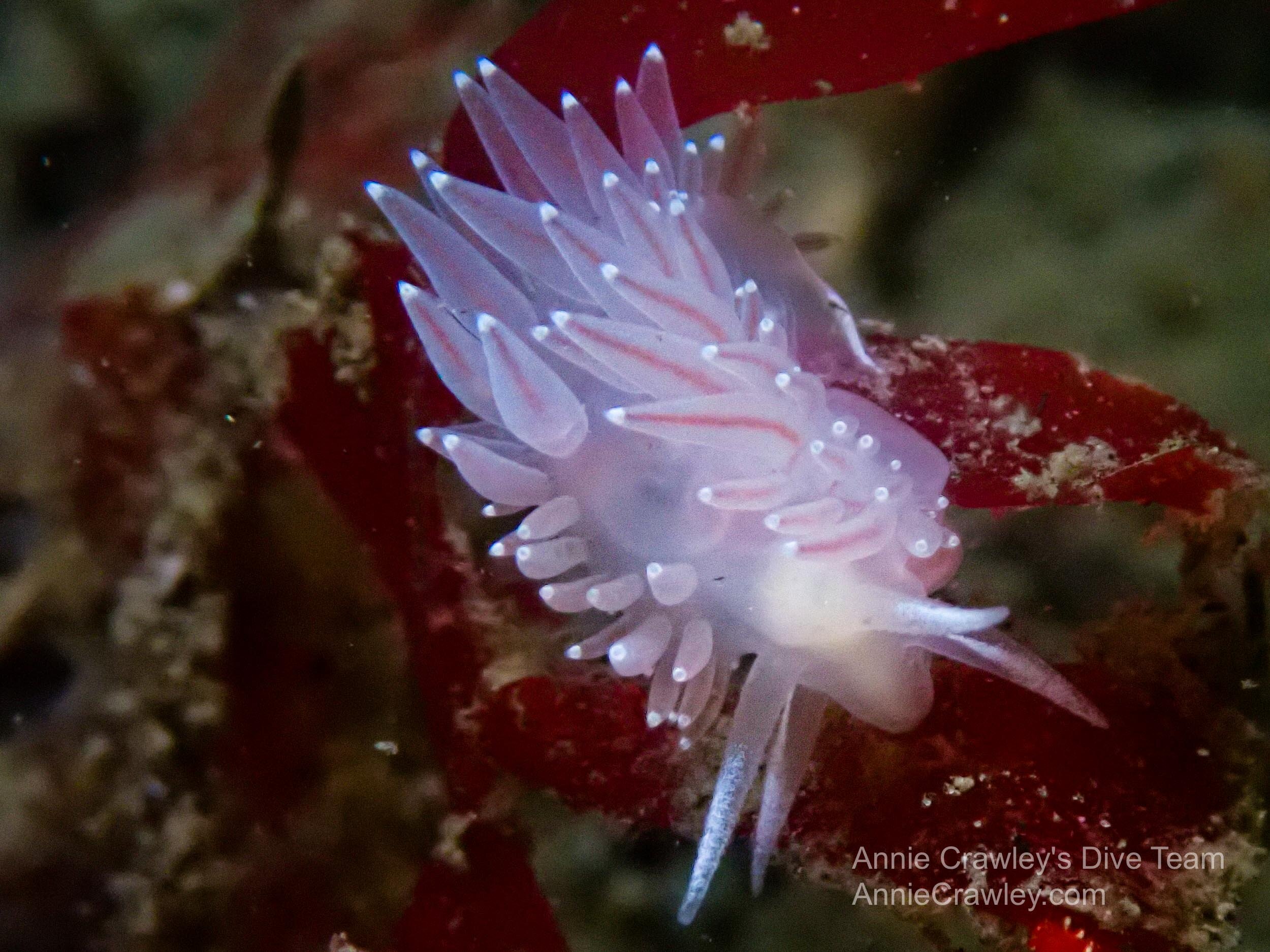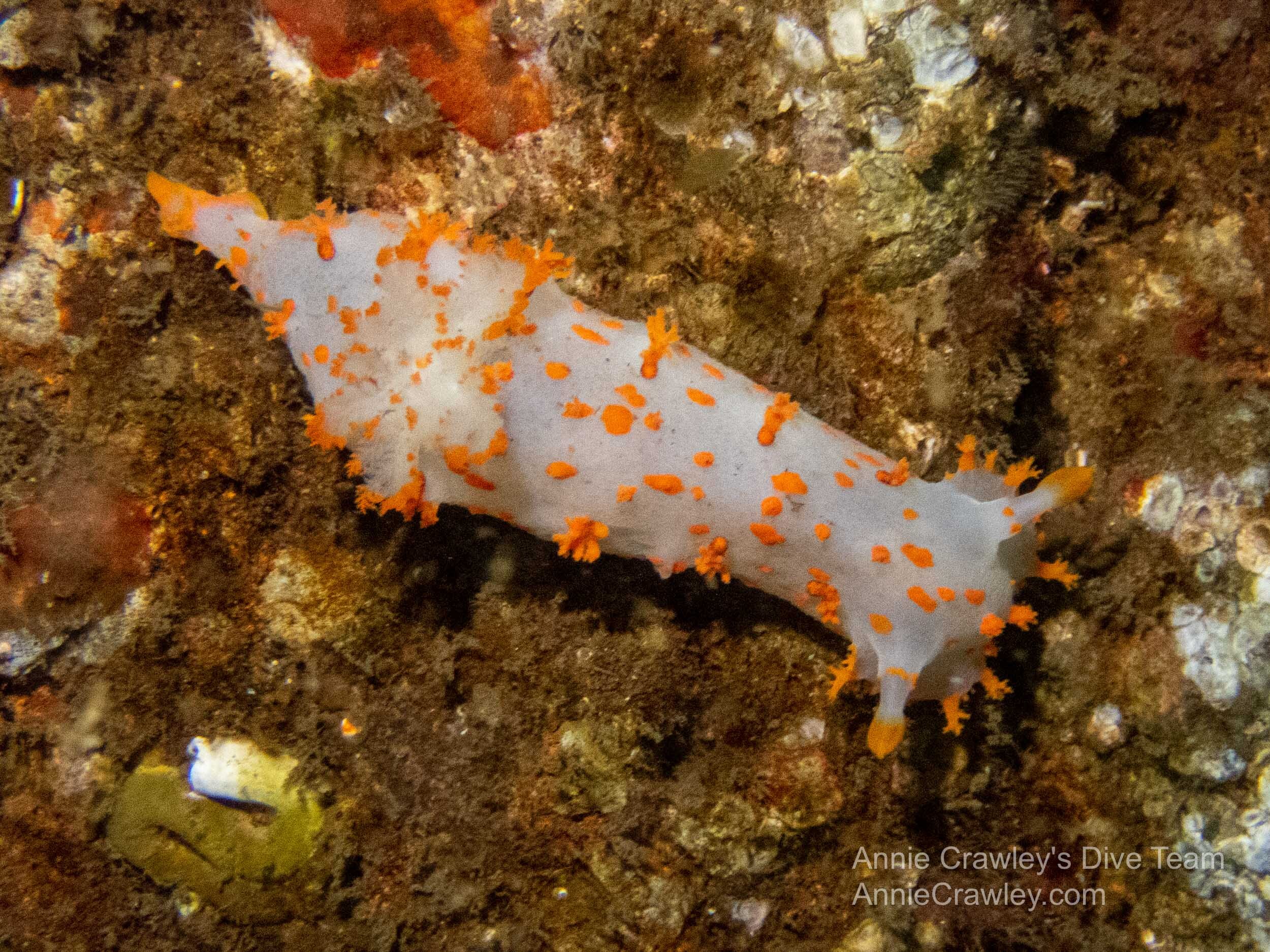Meet Your Neighbors: Nudibranchs of Edmonds Underwater Park
Edmonds Underwater Park is our underwater backyard. Do you know your neighbors? Meet the nudibranchs, or sea slugs. These are no ordinary slugs. Nudibranchs are notorious for their variety in color and design, making them exciting to find underwater. Our dive team uses our macro cameras, Olympus TG-6s, with Light & Motion lights to document the nudibranchs of Edmonds Underwater Park.
There are over 3,000 species of nudibranchs that live all over the world. From the cold polar water to the warm tropics, you can find nudibranchs anywhere. We have many species here in the Puget Sound area of the Salish Sea, including in Edmonds Underwater Park. Some species use camouflage to blend into their surroundings, like the shaggy mouse nudibranch, but many are outright flamboyant in color. The clown nudibranch, Cockerell’s dorid, Nanaimo dorid, and red flabellina are just a few examples of how spectacular these animals can be.
Nudibranch Anatomy
Nudibranchs receive their name from the translation of “naked gills” from Latin and Greek, referring to their gill organs located on their back. This is how they absorb oxygen from the water. There are two main groups of nudibranchs, distinguished by their gills. Dorids, such as sea lemons, have large branchial plumes. Aeolids, such as the white lined dirona (pictured left), have gill appendages called cerata that cover their bodies. These organs are used for breathing, digestion, and other bodily functions. All nudibranchs have sensory organs called rhinophores located on their head, which they use to interact with the world. Nudibranchs sense chemicals and even taste with these protrusions. When taking photographs of nudibranchs, we like to focus on these beautiful rhinophores. Macroscopic images reveal to us the lamellae, or ridges, covering the rhinophores, showing us these sensory organs are highly adapted to increase surface area and maximize chemical reception.
Reproduction
Nudibranchs are hermaphroditic, meaning they possess both male and female reproductive organs. Since they do not move very far or fast, this is beneficial because it means they do not need to be selective when finding mates. Nudibranchs lay their eggs in beautiful ribbon-like spirals that look like flowers. Each species has a unique way of creating these whorls and they can lay up to millions in one mass.
Defense
Nudibranchs may use their colors to signal predators not to eat them. They acquire their color from the food they eat, which includes sponges, ascidians, anemones, hydroids, corals, fish eggs, and sometimes even each other. They eat with a rough dentary plate called a radula, specially designed for crushing and scraping. Nudibranchs can accumulate poison and stinging cells from their food and use it for their protection. This is important because, unlike their snail relatives, nudibranchs do not have a protective shell to hide in.
To date, we have found 16 species of nudibranchs in our park. Most nudibranchs are benthic dwelling, meaning they live on the bottom. There are a few species, however, that have the ability to swim such as the hooded nudibranch and the golden dirona. The most common nudibranch species we see in the park are sea lemons, false sea lemons, leopard dorids, and white lined dironas. The sea lemon is especially interesting because, apparently, it produces a lemony scent. Though humans cannot smell it underwater, animals commonly use scent to signal to each other. Perhaps the false sea lemon, which in contrast does not smell like lemons, mimics the color of the aromatic true sea lemon for some advantage.
Evolutionary Success
Nudibranchs hold many mysteries to us humans. Although their colors and behaviors seem bizarre, nudibranchs are an example amazing evolution. All creatures must survive, eat, reproduce, and fulfill a role in the ecosystem. The unique traits of these nudibranchs allow them to be successful all over the world. Though they are tiny, they are incredible. Our team is always on the hunt to find new creatures. Next time you explore your backyard, consider using your macroscopic eye to focus on small but important life that is too often overlooked. Appreciate the diversity of life everywhere!














Abbey is a PADI Divemaster and aspiring marine biologist. Read Abbey’s Bio.
